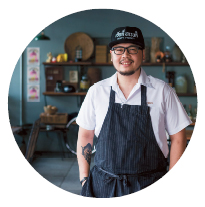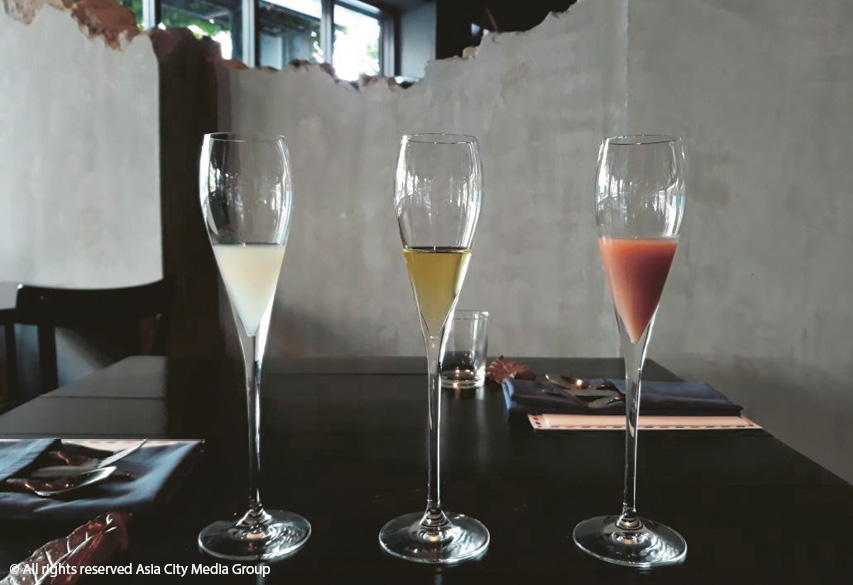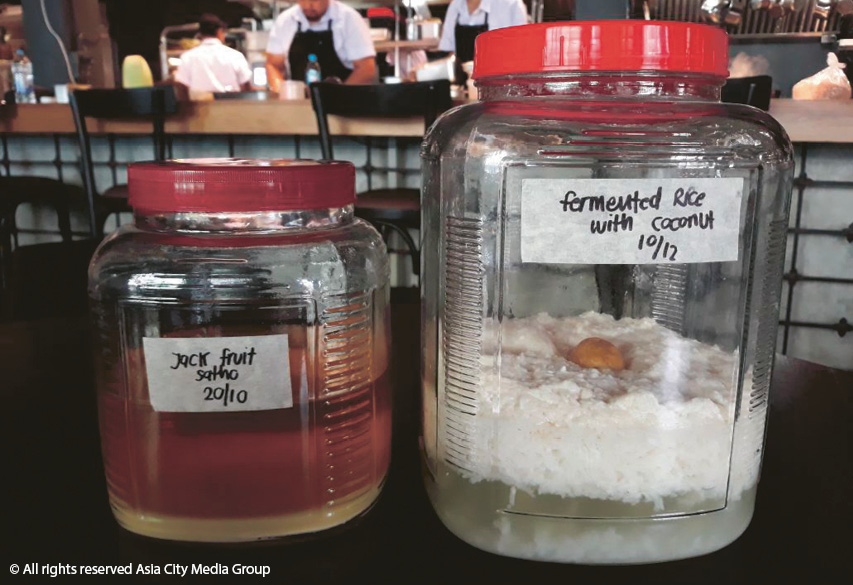Bangkok’s bar scene has seen a shift towards local spirits lately. Alongside the resurgence for Thai herbal whiskey—
yadong—there’s been a wave of new Thai-brewed concoctions hitting the market like
Lanna, a rice spirit made by a collective of top Bangkok bartenders, and
Barrelhouse 53, a vodka produced by Bamboo Bar. But there’s now a lighter booze fermenting under the counters of Bangkok’s bars, and you’ll be pleased to hear it tastes (and smells) a whole gentler than its herbal counterpart.
Sato has been a part of Thai culture for centuries, made by fermenting glutinous rice with “look pang,” a combination of yeast and fungus. The fermentation process takes around 20-35 days—any longer and it risks turning sour. It contains no more than 15-percent alcohol but, if distilled, it will turn into lao khao (Thai rice whiskey) with an alcohol content of up to 55 percent.
“Sato is part of the Thai fermentation preservation culture that has existed for so long, but it’s getting lost more and more these days due to laws and regulations,” says Napol “Joe” Jantraget, head chef and co-owner of
80/20 restaurant.
Indeed, local laws are strict when it comes to producing the spirit. The excise tax law, section 191, states that if you own sato for the purpose of selling it, you can be fined up to B50,000, while section 192 rules that if you simply own it without the intention to sell, you may face a fine of up to B10,000.
Despite this, chef Joe serves his home-fermented sato as a complimentary drink paired with the pork dish on 80/20’s tasting menu. Arriving in elegant stemware, it’s far cry from sato’s backcountry origins.
 | “I think people are already secretly making it at home." - Chef Napol “Joe” Jantraget, 80/20 |
With Japanese rice wine, sake, in full-flow at Bangkok’s ubiquitous Japanese izakayas, the city’s also starting to get more exposure to Korean rice spirits like soju, thanks in particular to the opening of dedicated Korean bars like Sulbkk and Sot Soju Bar. However, sato remans little-known among younger generations. Seeking to change this, Tep Bar made the bold decision to sell it in bottles at Wonderfruit festival back in December.
“Around 50 years ago, there used to be people producing bottled sato and selling it along Vibhavadi-Rangsit Road, though sato has a very short shelf life so maybe that was why it disappeared. With its refreshing, easy-drinking taste and not-so-high alcohol percentage, we think it’s ready to make a comeback in city life, especially since you can just pour it over crushed ice and enjoy,” says a team member at
Tep Bar who asked to remain anonymous.
There are more reasons to support sato than just the taste, argues Ted Ahn, owner of
Changwon Express and
Changwon Express at Flow House. “Even if a microbrewery gets permitted in Thailand, most of the ingredients used to make beer will still need to be imported, whereas sato ingredients all grow in Thailand without too much effort, so it could help local farmers.”
According to Ted, who is Korean and has been secretly making sato at home with Thai khao suay (rice) and Korean yeast, “The Korean version of sato [makgeolli] made a comeback in the early 2000s; now there are many craft makgeolli breweries and they are exporting to other countries. A few fine-dining restaurants in Korea now pair their dishes with makgeolli. When I look at what happened with makgeolli, sato definitely has a chance to make a comeback in Thailand.”
He continues, “The Korean government supports the makgeolli industry by reducing taxes and allowing online sales to boost rice consumption in the country. It is a proven fact that sato can help Thai society economically.” Next time you visit Changwon Express, why not see if he’ll let you try some.
 | "It is a proven fact that sato can help Thai society economically.” - Ted Ahn, Changwon Express |
Nowadays, sato is not widely available, though you will find the Siamsato brand retailing at Tesco for B37 per 640ml bottle. It’s also sold online via www.thaitambon.com, a website that specifically sells products made by locals under the One Tambon One Product program founded by Thaksin Shinawatra in 2001.
“I think people are already secretly making it at home. I don’t see any cons of bringing it back, except that the government can’t claim tax,” concludes chef Joe of 80/20.
Though it’s unlikely that Thai sato is en route to large-scale production anytime soon, it seems plenty of bartenders have it stashed away beneath the bar, so be sure to keep your ear to the ground.



